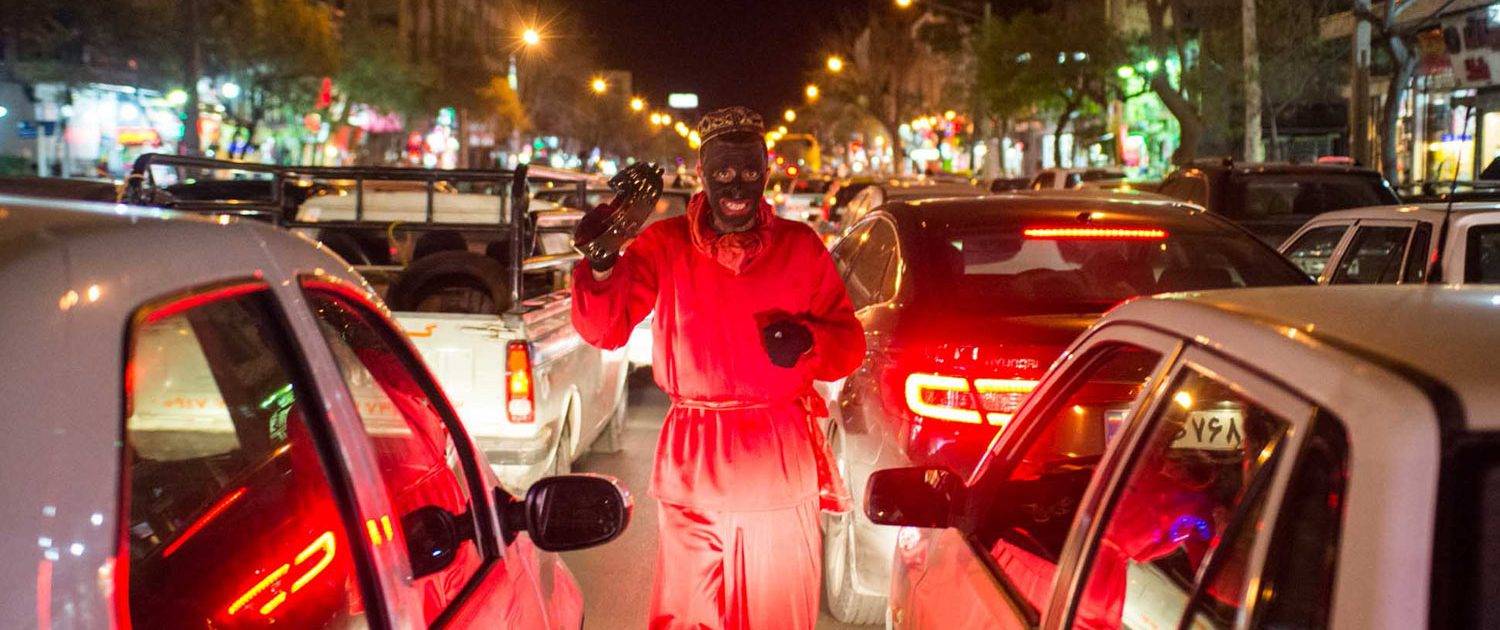This past week, I attended a host of Nowruz parties and “mehmoonis” in celebration of the New Year. For me, these celebrations center mostly around seeing relatives and eating delicious food. Beyond this however, I don’t pay much attention to the traditions and symbols of Nowruz, and just try to enjoy myself. At the most recent celebration I went to however, my view of these traditions shifted.
As I was talking with some friends, I heard the jingles of a familiar Nowruz song play on the speakers. Everyone around me stood up and started clapping along, so I did the same. When I glanced over at the stage however, I immediately sat down in shock of what I saw.
Haji Firuz is a traditional Nowruz character and symbol that I, like most Iranians, don’t pay much attention to. The story goes that before Nowruz, he dressed in red and started dancing and singing through the streets of Iran in celebration of the New Year. Today, people recreate this story at Nowruz events by having someone dress up as him for entertainment and tradition. But something about Haji Firuz causes one to take a second look.
Haji Firuz is black. The man had painted his face entirely black as part of his costume, striking me with an overwhelming feeling of anger and guilt. As my relatives, friends, and family started dancing around him, they remained oblivious of why I had removed myself from the celebration. Blackface for costumes and other forms of entertainment are completely unacceptable in my hometown in the U.S. where this celebration took place. As a subsect of the larger community, I wrongly assumed that my Iranian-American community would automatically uphold societal norms and values of what is perceived as racist. I was shocked that in the United States, behind closed doors, blackface was being used and celebrated in my own community.
As a marginalized group, we understand what it’s like to be discriminated against, thus it even more important to be thoughtful of the racism we may perpetuate today.
Some claim Haji Firuz’s blackface is used as a linking to ancient Iranian symbols. Mehrdād Bahār for example, in his 1938 paper claimed Haji Firuz has strong connection with Siavash, a sacred person in Iranian mythologies. However, he backs up his speculative claims with flimsy evidence that has been repeatedly questioned by scholars.
Scholar Hāšem Rażi’s theory draws that Haji Firuz was actually a black slave who entertained during the New Year in the Sasanian period. He states that he is a continuation of a New Year’s tradition of dressing up with makeup and bright clothing and dancing and singing to entertain guests and the king.
The jingle Haji Firuz typically sings could be interpreted as reinforcing his position as a slave. He repeatedly refers to his “arbab,” traditionally meaning the boss or master of many. The theory postulates that Haji Firuz was one of the one-two million black slaves that were brought from Africa to Iran as part of the 19th century Indian Ocean Trade exchange. These slaves were used primarily as household servants, and although slavery not outlawed until 1929, many African slaves were freed and working in their communities by then.

Even though question marks may exist about the origins of Haji Firooz, the use of blackface remains offensive within the norms of American society. Insisting on using a symbol that is widely perceived as racist in an American context is problematic and shortsighted. Traditions can shift and change to adapt to new times and spaces. In fact, similar traditions that also use blackface such as Zwarte Piet of the Netherlands are being condemned and removed. Not using blackface in artistic representations of Haji Firuz through performance and art is necessary and easy, and many have already begun painting the Iranian flag on the face, or leaving it as is.
I was raised by my Iranian-American community to be accepting and inclusive of all races and religions. As a marginalized group, we understand what it’s like to be discriminated against, thus it even more important to be thoughtful of the racism we may perpetuate today. At a time when the Iranian-American community is directly targeted by the Trump administration’s discriminatory policies, we need to reach out to other communities to build stronger coalitions of resistance. Before we can do so however, Iranian-Americans must examine how others will perceive this symbol and view us and our biases. By eliminating blackface from all traditions and rejecting other practices that may be or may be perceived as racist in the Iranian-American community, we can uphold our true values of diversity, justice, and unity into the future.






